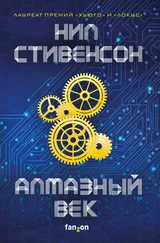Saskia had now spent enough time around him to know that when he said “Above” or “Below” in that portentous and knowing tone of voice he meant “above sea level” or “below sea level.” In it was a kind of droll sarcasm at the very idea that there was such a thing as sea level in any useful sense. He saw it all stochastically and wouldn’t be caught dead speaking of sea level with a straight face.
Parking lots and office buildings were in view to the east. Beyond those was an industrial port zone that put her in mind of Rotterdam, with open water beyond that. She spied a familiar logo on several of the nearer buildings and realized it was all NASA property. The Houston of “Houston, we have a problem.” A little more altitude gave her the perspective to delineate a border fence, guarded by gates where it was pierced by roads, as well as other kinds of defenses that had been heaped up to protect vulnerable parts of the complex from floodwater. But the swarm didn’t go in that direction. Instead it followed an adjacent road to a commercial development that was as close to the Johnson Space Center as it could get without encroaching on government property. Logos on some of the buildings, and signs planted near street entrances, were suggestive of aerospace.
One of these buildings sported a five-story parking ramp with a flat roof. That was where the drones all came to rest, landing one at a time, each folding up and rolling out of the way to make room for the next. There were more big umbrellas and choreographed movements that conducted Saskia and the others into one of the adjoining office buildings. They were ushered through the doors and past a range of security checkpoints into the offices of White Label Industries LLC, whose logo was a featureless white rectangle.
In the course of her official duties, Saskia had endured hundreds of tech company tours. White Label Industries was the same as all the others: people sitting in chairs and typing. Some had made the switch to augmented-reality glasses, others—generally older—hewed to the ancient practice of walling themselves in with flat-panel monitors. They were all writing code or working on CAD models, not of anything spectacular but of bolts and brackets. Usually the queen had to feign interest, but T.R. seemed to know full well how boring this was. “I just wanted you to see that this exists. Everything you’ll see in West Texas was designed out of here. We needed a lot of aerospace guys. This is where it’s easiest to poach ’em. They’re happy working on shit that’s actually getting built, even if it ain’t going to Mars with some fucking billionaire. We gotta terraform Earth before we get distracted by Mars is my philosophy.”
Saskia saw nothing during her sweep through the place to contradict that. These guys did look happy. A little older, whiter, maler, and squarer than techies in Sunnyvale or Amsterdam. Calmly, even serenely focused on what they were doing.
A small bus, like an airport shuttle, was awaiting them in a loading dock that was otherwise crammed with cargo pallets bearing machine parts. None of those had the lightweight gracile look she associated with aerospace tech. Most of it was steel, and little of that was stainless.
Once they had taken seats, the roll-up door was opened and they pulled out onto a road that, over the course of the next few minutes, took them generally east, toward Trinity Bay—the lobe of the Gulf that served as Houston’s port. They passed a NASA gate but did not turn into it. The various buildings of the Johnson Space Center glided by them and Saskia realized with mild, childlike disappointment that they weren’t going there to ooh and aah at big old rockets. It simply wasn’t T.R.’s way. Instead they cut across a belt of subdivisions, variously hunkered down behind dikes or jacked up on stilts or abandoned and rotting. Boat-borne squatters seemed to have colonized some of the latter.
They entered into that industrial zone she’d glimpsed earlier, which made her homesick as it reminded her so much of the new parts of Rotterdam, close to the sea, where the big refinery complexes were built to process the oil coming in from Norway. Here, of course, the oil would be coming from offshore rigs in the Gulf of Mexico. But the equipment looked the same. She even spied a Shell logo in the distance. But eventually they passed through a security gate blazoned with the name of an oil company that she never would have heard of were it not for the fact that Willem had done his homework and compiled a dossier on T.R., and Saskia had read it. The company in question was a small (by Texas petrochemical industry standards) firm that had been founded by T.R.’s grandfather and that still existed as an independent legal entity, though it hadn’t been doing a lot of business in the last decade.
The gate gave way into a waterfront property that seemed forgotten compared to the larger complexes that hemmed it in. It had its share of industrial buildings, clad in rust-maculated galvanized steel, but by far its most prominent feature was a perfectly conical mound of brilliant yellow powder rising to the height of a ten-story building.
Her immediate thought, fanciful as it was, was that this must be some kind of immense, spectacular art project. This was partly because of its size and its geometrical perfection, but mostly because of its outrageous color: intense, pure, powerful yellow. She wished Fenna could be here to weigh in on this yellow and what made it different from other yellows. To a Dutchwoman, the obvious comparison was to daffodils. Not the paler color at the petals’ tips but the deeper hue at the base. But if you held a daffodil up against this thing, the flower would look paler, more toward the green/blue end of the spectrum. This cone of stuff, this artificial dune, tipped slightly more toward the red-orange. But it wasn’t dark. It almost glowed.
It was one of those things like a Great Pyramid or a Grand Canyon that you just had to walk toward, so everyone got out of the bus and did that. It was even bigger than it looked, and so it took a little while to reach the crisp edge where the slope of it dove into the ground. Saskia turned her head from side to side and estimated the size of it as comparable to a football field. The peak was something like thirty meters above her head.
She bent down and took a pinch of the yellow powder between her fingers. It was finer than table salt, less so than flour.
Frederika Mathilde Louisa Saskia was more than normally technical-minded by the standards of European royalty, and in the defense of her country she had put a career’s worth of effort into studying climate change. She had read the word “sulfur” a million times in scientific papers and conference proceedings. She knew its atomic number, its atomic weight, and its symbol. She was accustomed to the fact that Brits spelled it with a “ph” and Yanks with an “f,” and she knew its cognomens such as brimstone. Yet in all that time she had rarely seen sulfur and never touched it. A school chemistry lab might have a teaspoon of sulfur in a labeled test tube, so that children could say they had once seen it. But that was a very different experience from standing at the base of this . . . this industrial art project. As a sort of childish experiment she stood facing it and tried to position her head so that sulfur was the only thing she could see. Every rod and cone in her retinas maxed out on “yellow.” She brought a pinch of it close to her nose for a sniff.
“It don’t stink,” said T.R., who had drawn up alongside her. “This is pure enough that you’re not gonna get that rotten egg smell too bad.”
“It doesn’t dissolve in the rain?”
“Nope, water runs right through it,” T.R. said. He took a step back, extended his arms, and gave it the full Ozymandias. “Sulfur!” he proclaimed, in the same tone that a conquistador might have said “Gold!” “The stone that burns!” Then he added, “S!,” which Saskia knew was an allusion to its symbol on the periodic table. “We so rarely see or touch an actual element , you know. Nitrogen and oxygen in the air? Those are diatomic molecules and not the element itself. Aluminum, sure—but that’s always an alloy. Iron, sometimes—but usually steel, another alloy. Mercury in an old thermometer, maybe. Helium in a balloon. But here’s the real deal, Your Majesty. Two hundred thousand tons of an element . About a year’s supply, for our project.”
Читать дальше
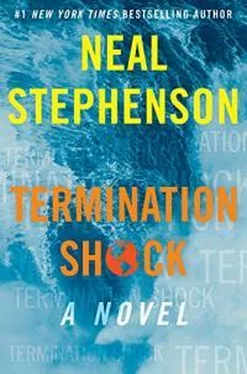
![Нил Стивенсон - Криптономикон [litres]](/books/23868/nil-stivenson-kriptonomikon-litres-thumb.webp)
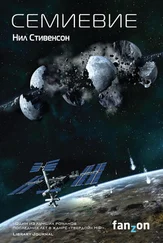
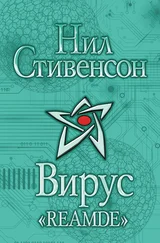

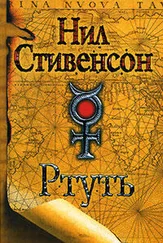

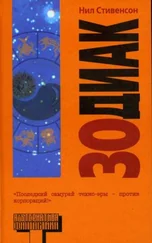

![Нил Стивенсон - Лавина [litres с оптимизированной обложкой]](/books/414066/nil-stivenson-lavina-litres-s-optimizirovannoj-ob-thumb.webp)
